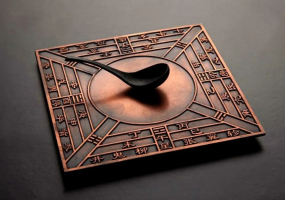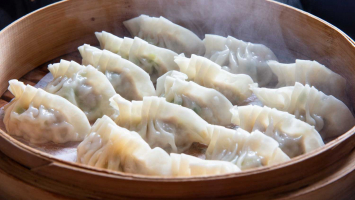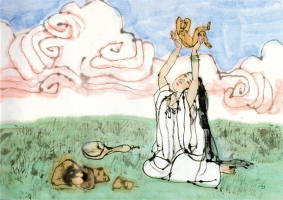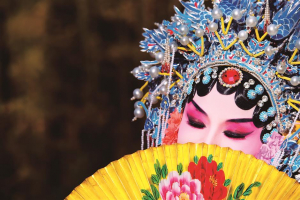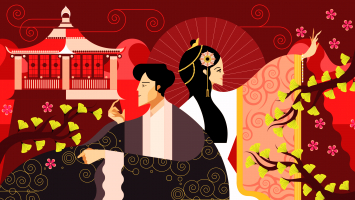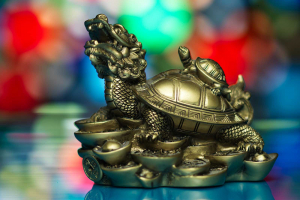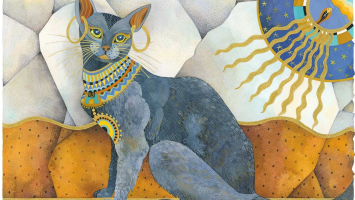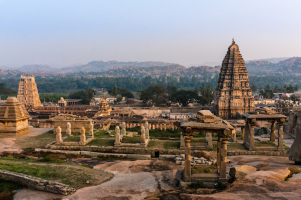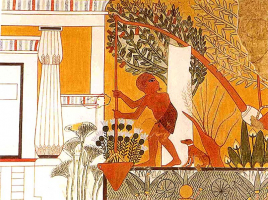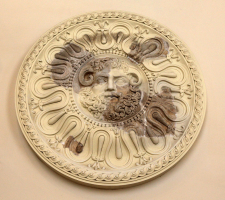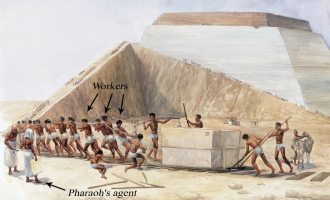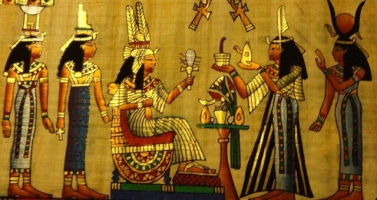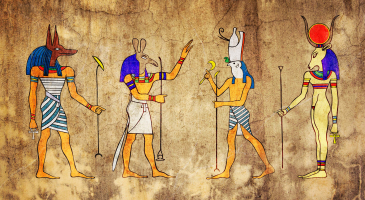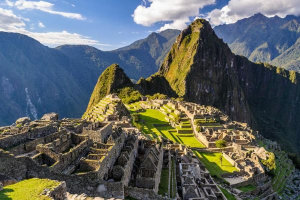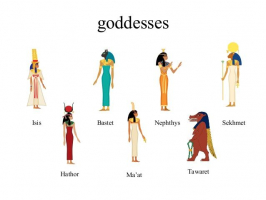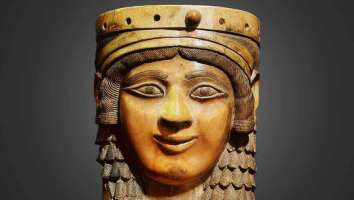Top 10 Ancient Chinese Dynasties
In Chinese history, dynasties were hereditary monarchies that ruled China for the majority of its history. China has been controlled by consecutive dynasties ... read more...from Yu the Great's dynastic dominance in roughly 2070 BC through Emperor Xuantong's resignation on February 12, 1912, as a result of the Xinhai Revolution. China's dynasties comprised dynasties led by the Han, the country's predominant ethnic group, as well as coalitions made by non-Han peoples. One practical way to identify the time is to divide Chinese history into dynasty-ruled periods. Consequently, a dynasty may be used to define the time in which a family rules as well as to characterize the events, customs, personalities, works of art, and other artifacts from that era. In this writing, Toplist would like to introduce to readers a list of Ancient Chinese Dynasties so that you can understand more about this country with its long history.
-
One of the Ancient Chinese Dynasties we would like to introduce is the Xia Dynasty. It is regarded as the first dynasty in ancient China. It had a duration of more than 500 years and was ruled by 17 distinct emperors after Shun, the final of the Five Emperors, abdicated, and the legendary Yu the Great established the Xia Dynasty.
During this time, it is common for the Yellow River to flood, which harms the area greatly and impedes social and economic advancement. Numerous tribes banded together to control and stop the Yellow River flood. Emperor Yao then tasked Gun, the father of Yu with halting the deluge. To stop the flow of water, he gave the order to build substantial dikes. However, following nine years of laborious dike and dam construction, Gun's strategies ultimately fell short, resulting in several fatalities as his constructions crumbled under the weight of more powerful floods. The Shun emperor later gave the order to confine Gun for the rest of his life at Yushan, a mountain that stands between present-day Linshu County in Shandong Province and Donghai County in Jiangsu Province. In contrast to his father, Emperor Shun has great faith in Yu. He, therefore, designated Yu to carry on his father's efforts in flood mitigation. Yu's approach in this piece differs from his father's. He gathered individuals from all tribes and instructed them to assist him in constructing canals in all the major rivers that were overflowing in order to direct water to the sea.
Due to Yu's ability to stop the floods, the Xia tribe's strength developed along with agricultural output, and Yu eventually rose to prominence as the head of the neighboring tribes. Soon after, Shun despatched Yu to command an army to subdue the Sanmiao tribe, who had been mistreating the border tribes on a regular basis. He vanquished them and banished them to the southern region around the Han River. The Xia tribe was much more powerful after this triumph. Yu was commended by the people for his endurance and inspiration that led other tribes to engage in the effort as a result of his commitment to it. According to legend, he successfully finished the flood protection job for 13 years, but despite having passed by the house three times, he never went home to rest.
In his regime, talent was given more weight than ancestry when selecting emperors. However, his son Qi instituted a hereditary system of succession upon his passing. Thus, all fifteen of Qi's children succeeded him after his passing. Agriculture was the major source of employment at this time. Stone and bone were often used to make farming implements during this time, while bronze was also widely used.
In short, the Xia Dynasty:
- existed from 2205 to 1766 BC and was ruled by 17 distinct emperors after Shun.
- Yu the Great was a legendary emperor who has great merit in stopping the flood of the Xia Dynasty.
- ended with Emperor Jie. He is a despot who never considers his subjects and just cared about his own extravagant lifestyle.
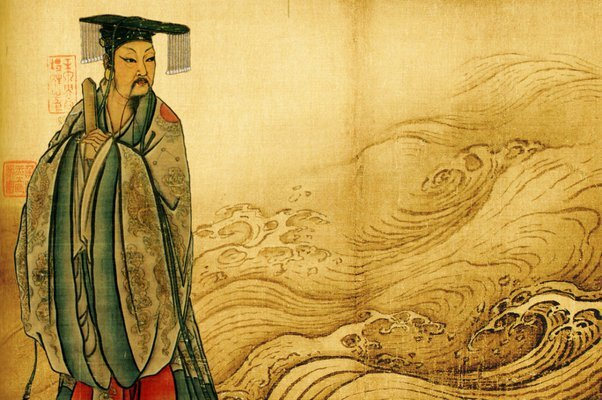
Yu the Great - Photo: quora.com 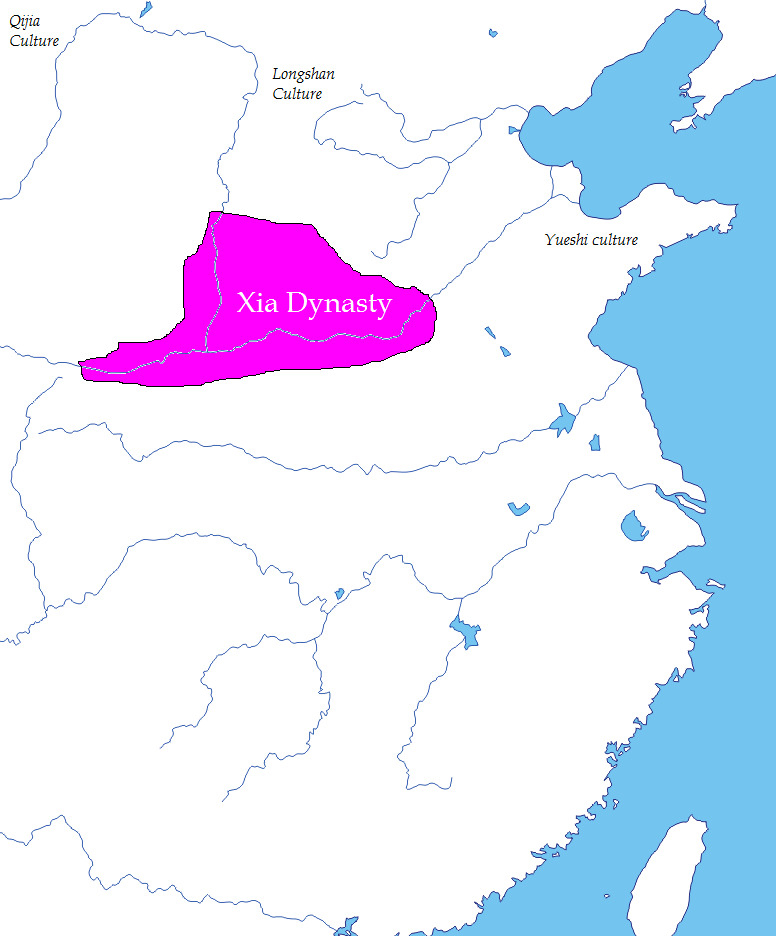
Xia Dynasty territory - Photo: izzystarsblog.wordpress.com -
Another established Ancient Chinese governing Dynasty recognized throughout history is the Shang Dynasty. The Bronze Age in China was ushered in by the Shang Dynasty, which lasted from 1600 to 1046 BC. It has made significant strides in astronomy, mathematics, art, and military technology.
Sima Qian wrote about the Shang dynasty's foundation story in the Annals of the Yin people. According to the story, Jiandi, who was Emperor Ku's second wife, miraculously gave birth to Xie after ingesting an egg that had been dropped by a blackbird. According to legend, Xie assisted Yu the Great in managing the Great Flood, and as thanks, he was awarded the fief of Shang. On the other hand, the oldest written accounts of Chinese history come from the Shang Dynasty, which began after a tribal leader named Tang fought the Xia, who was ruled by a tyrant named Jie, around 1600 BC. Jie won the conflict but afterward passed away from sickness. Tang was renowned for reducing the number of reserve troops in the army and launching social initiatives to aid the underprivileged in the monarchy.
During its existence and development, the Shang Dynasty made many important achievements. First of all, the artists of the Shang Dynasty produced magnificent jade jewelry, ceramics, and bronze works. They employed the thin casting process rather than the wax loss method, in contrast to their Bronze Age predecessors. This implies that before wrapping it in the clay mold, they first develop a model of the product they wish to create. The clay mold is then divided into pieces, taken out, and fired to make a brand-new, cohesive mold.
Secondly, according to writings on tortoise shells discovered by archaeologists, people of the Shang Dynasty employed the calendar and advanced their understanding of astronomy and mathematics. The Shang calendar was initially based on the lunar calendar; but, subsequently, a solar-based calendar was created by a man by the name of Wan-Nien, who formed a 365-day year via his observations and calculated the precise date.
In addition, the language of the Shang Dynasty was an early form of modern Chinese. During this time period, cow bones and turtle shells were engraved with Chinese characters for the first time. There is proof of two Shang Dynasty arithmetic systems, one based on the numerals 1 through 10 and the other on 1 through 12.
Diverse stone and metal weaponry, including spears, yuè axes, daggers, arrows, and bronze or leather helmets, were used by the Shang Army. According to recent archeological discoveries, the late Shang employed horses, chariots, bows, and arrows, as well as horse burial customs that were comparable to those of the steppe peoples of the west. Oracle bone inscriptions reveal that the Shang exclusively utilized chariots as a mobile command vehicle in war and during royal hunts. Although the Shang relied on the military prowess of its aristocracy, the Shang rulers were able to enlist large populations of urban and country citizens as conscripts and soldiers for the duration of the campaign. Nobles and other state officials were obligated to arm and equip their local garrisons with all required supplies. The Shang ruler would personally lead this force into combat while keeping a force of around a thousand warriors in his city. In order to construct troops ranging from three to five thousand men for border battles to 13,000 soldiers to put down uprisings, a basic military infrastructure was also required.
In terms of religion, the fairy bone shards, which depict a kingdom at war with tales of shifting alliances with foreign kingdoms, have helped archaeologists understand a large portion of the religion-related history of the Shang dynasty, which was discovered in Anyang. With captives of battle, sacrifices were made in the Shang religion. The monarch serves as a priest in it as well. It is said that the highest ancestor, deity Di, will serve as a conduit for ancestral communication. The Shang monarch also took the lead in interacting with other ancestors and worshiping Shangdi. A group of mystics heard the aspirations of the ancestors, which the monarch later interpreted.
Around 1046 BC saw the end of the Shang Dynasty. King Di Xin, the final monarch of the Shang line, was despised as a ruthless ruler who relished tormenting his subjects, which prompted demands for an end to his rule.
Nowadays, The Shang Dynasty is the first period of traditional Chinese history that has a substantial amount of archaeological evidence in its favor. There have been 11 massive royal tombs discovered as well as the ruins of palaces and ceremonial sites at the Yin Ruins, which are close to modern-day Anyang and have been recognized as the last Shang capital. Thousands of objects made of metal, jade, stone, bone, and pottery have also been discovered. The earliest known Chinese inscriptions may be found at the Anyang site, largely divination on bones belonging to seers like tortoise shells, ox scales, or other bones. During the first scientific excavations in the 1920s and 1930s, more than 20,000 were found. The inscriptions shed light on a range of subjects, including politics, economy, religious rituals, as well as the early Chinese civilization's arts and medicine.
To conclude, the Shang Dynasty:
- lasted from 1600 to 1046 BC.
- had made significant achievements in astronomy, mathematics, art, and military technology.
- the reign of King Di Xin saw the end of the Shang dynasty.
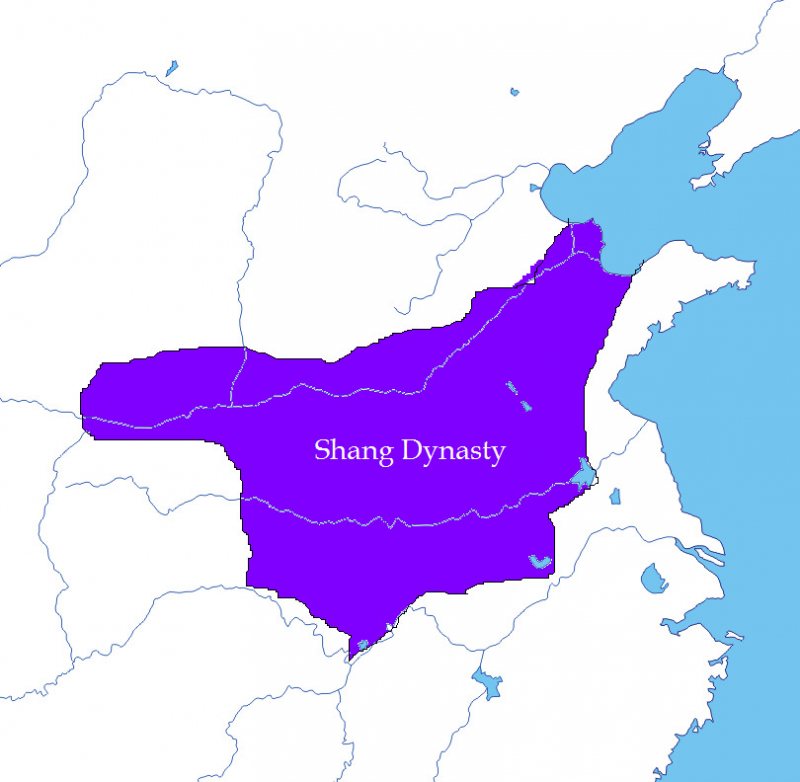
The Shang dynasty's territory - Photo: izzystarsblog.wordpress.com 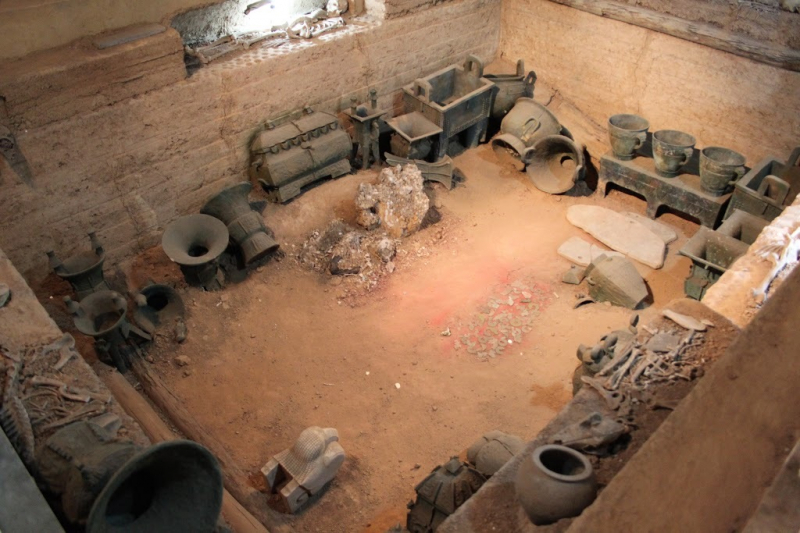
Bronzewares from the excavated tomb in the Shang dynasty - Photo: china-dynasty.weebly.com -
The Zhou people originated in modern-day China's Shaanxi province, located far to the west of the Yellow River. Around 1050 BC, they defeated the Shang and created their own dynasty. The Shang and Zhou dynasties had many similar cultural features. They use metals, engage in divination, and perform equivalent religious rituals.
According to Chinese mythology, Jiang Yuan, the wife of the mythical Emperor Ku, became pregnant with a child named Qi after entering the sacred footprints of Shangdi. This event marked the beginning of the Zhou Dynasty. Qi is a cultural hero known for enduring three instances of mother abandonment. He also achieved significant agricultural improvements, prompting Emperor Shun to elevate him to the status of a lord and confer the title of "Lord of the Millet".
Because its capital was in western China, the early years of the Zhou Dynasty (1050–771 BC) are also known as the "Western Zhou" period. The early rulers of the Zhou dynasty created a type of feudalism with territories administered by designated relatives and other nobles due to their broad dominion, greater than that of hospitals. They developed the concept of Heaven and Heavenly Mandate to justify the destruction of the Shang. They think that a ruler can only take power if he is endowed with favor from heaven. A monarch must be a moral leader because this belief has a holy moral force. Early Zhou Dynasty Art is mainly a continuation of Shang Dynasty art. Copper is a prime example of this. For their own decorative bronzes, the Zhou borrowed motifs from Shang contemporaries, but they also added fresh patterns and forms.
The power of the Zhou rulers diminished over time as the constituent kingdoms became increasingly independent, wealthy, and powerful. Furthermore, a nomadic invasion forced the Zhou emperors to retreat eastward and establish a new capital at present-day Luoyang. That was when the Eastern Zhou Dynasty officially began (771–221 BC). There was a lot of political turmoil during the Eastern Zhou Dynasty. For control of land and politics, the nations were constantly at war with each other. The second part of the time is actually known as the Warring States Period (475-221 BC), during which weak states eventually united to form seven powerful kingdoms. These seven nations fought each other for control of the region until the Qin dynasty emerged as the victor and formed the Qin dynasty (221–206 BC).
The visual arts show a weakening of the Zhou rule of concentration. The sole use of bronze artifacts for official and religious ceremonies ceased. To demonstrate their status and wealth, local lords bought copper coins. The metal inscriptions make this very clear. Zhou's bronze inscriptions cover a wide range of subjects and often list some honor or achievement of the living nobility, expressing the elite's desire to maintain their rank and reputation. In addition, there have been developing new methods of decoration. The first paintings were of hunting scenes in ancient China. Even more choices of form and decoration have been created using new molding processes, such as waxing techniques. Musical instruments, especially bells from the rich finds in Zhou tombs, are a recent addition to Zhou bronze. It is clear that music, whether used for religious or recreational reasons, played an important role during the Zhou period.
The Eastern Zhou Dynasty saw great progress in the humanities and arts. During this time, China produced many brilliant minds. All new concepts were introduced, such as the emphasis on social and family structures in Confucian schools, following natural patterns in Taoism, and promoting systematic rewards and punishments in legalism. They mentioned the important issue of the day, which is how to build an orderly and peaceful community. Later, Chinese ideas were still influenced by these opposing ideologies and systems of thought, many of which are still in use today.
To summarize, the Zhou dynasty:
- lasted 789 years from 1046 BC to 256 BC.
- passed through two periods: Western Zhou and Eastern Zhou.
- achieved a new turning point in bronze making and decoration.
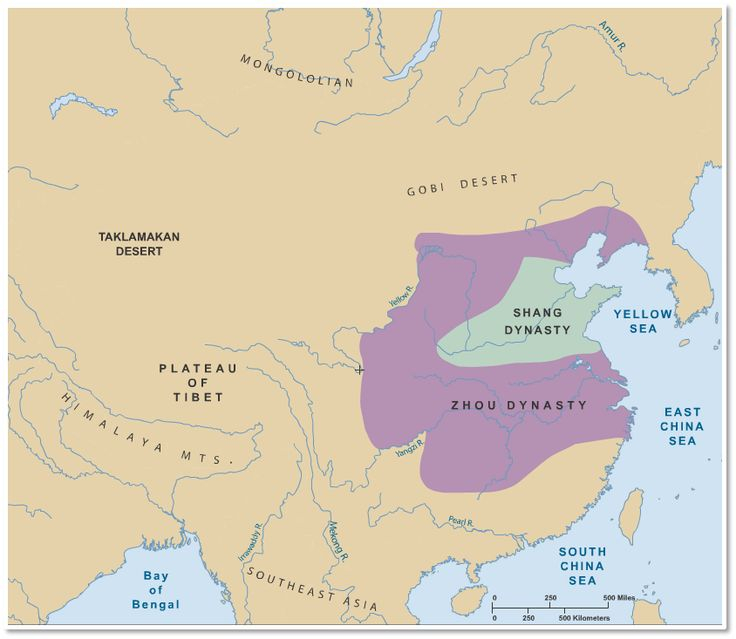
The Zhou dynasty's territory - Photo: pinterest.com 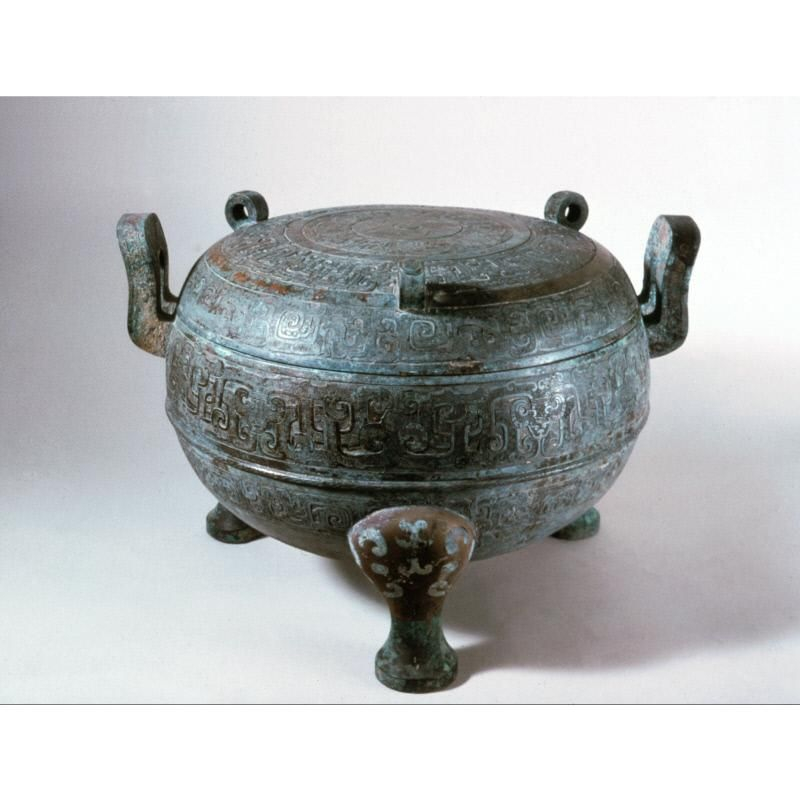
Contemporaries of the Zhou Dynasty - Photo: gorodvo.ru -
Beginning with operations in 230 BC, the Qin Dynasty created the first empire in China by conquering six Zhou nations. Although their rule over the Chinese Empire from 221 to 206 BC was brief, the Qin Dynasty had a significant cultural influence on the dynasties that came after.
North of Zhou territory, in what is now Shaanxi Province, the Qin Dynasty served as a buffer between Zhou and the less developed nations that were located there. In particular, Xianyang, the capital of the Qin, saw rapid expansion following the establishment of their empire. Actually, the governing Zhou dynasty previously saw the state of Qin as a barbarous, backward kingdom. This discrepancy resulted from Chinese culture's gradual assimilation, which lagged behind the Zhou Dynasty in the abolition of human sacrifice, for instance. The Qin aristocracy yet maintained their claim to be the rightful successors of the Zhou realms. They have therefore strengthened their diplomatic and political positions throughout the years using a number of techniques, such as strategic marriage.
From 361 BC until his passing in 338 BC, Lord Shang Yang, a Qin politician during the Warring States era, promoted the doctrine of Legalism by enacting a series of changes that were advantageous to the military. Beginning in the middle of the 4th century BC at Xianyang, BC Yang also assisted in the construction of the Qin capital. Notably, Qin Legalism encourages practical and brutal combat. Military leaders were ordered to follow what they believed to be Heaven's laws in combat during the Spring and Autumn period when fighting was viewed as a gentleman's activity. The Qin also possessed a strong, effective army and competent generals. Additionally, unlike many of their adversaries, they take advantage of the most recent advancements in both transportation and armaments. In later modifications, better agility was made possible over a variety of diverse terrain types, most of which are found in China. Therefore, the Qin Dynasty was better in terms of warfare both practically and ideologically. The Qin Empire, on the other hand, enjoyed a geographic edge because of its abundance and advantageous position, which was shielded by mountains and made the state a natural fortress. In contrast to the Yangtze drainage basin, it is the hub of the Guanzhong area. As a result, the increased agricultural output assisted in feeding and supporting Qin's massive army.
Once a tiny kingdom in the northwest, The Qin invaded the areas of the smaller states on its western and southern borders in the middle of the third century BC. The Qin then instituted a repressive strategy in an effort to consolidate its dominance and maintain it. Ying Zheng, who had united China, soon after entered the Qin Dynasty as a nine-year-old kid. He established his dominion east of the Yangtze River and to the south of it, conquered six of the seven warring nations, and named himself Qin Shi Huang, the First Emperor of the Qin Dynasty.
The empire of Qin Shi Huang grew throughout his reign, eventually extending as far south as Vietnam. His enormous empire was split into command areas and districts that were jointly run by military and civilian authorities under the supervision of a sizable central administration. Up to the 1911 collapse of the Qing empire, this organizational framework served as the basis for Chinese governance.
The standardization of non-alphabetic writing systems over the entirety of China in order to replace traditionally regional scripts was one of the most significant outcomes of the Qin conquest. To make writing faster and more efficient for record keeping, this alteration has been made simpler. The new script made it possible for regions of the empire that spoke different languages to interact with one another and prompted the founding of an imperial college to supervise all writing. Therefore, older philosophical writings were seized and limited as part of the scholarly effort.
In addition, by making measuring models out of bronze and dispatching them to local officials, the Qin also standardized weights and gauges. The merchants would then be forced to use them, which would facilitate trade and commerce across the empire. Thus, bronze coins were also produced in order to standardize money throughout various areas.
The Qin empire is renowned for its engineering feats, which include a complex network of more than 4,000 miles of roads and one superhighway that lasted for over 500 miles along the Ziwu Mountain range and served as a route for the transportation of materials for the Great Wall of China. Connected boundary walls that eventually became the first section of the Great Wall served as the empire's northern border markers. Meng Tian, a Qin road builder, oversaw the 300,000 workmen that were brought in to work on the Great Wall's construction and the service roads needed to move supplies.
Moreover, Qin Shi Huang sent 700,000 workmen to build his tomb at the base of the Lishan Mountains, which is considered to be his worst creation. A series of temples, chambers, magnificent halls, administrative structures, bronze sculptures, animal burial sites, a reproduction of the royal palace's armory, terracotta statues of acrobats and officials, a fish pond, and a river are all included in this underground metropolis.
While traveling in Eastern China, Qin Shi Huang passed away in 210 BC, leaving his son in control of the throne. However, the majority of the surrounding empire rebelled against the new emperor within two years of his reign. In 202 BC, the general of the Qin Dynasty, Xiang Yu committed suicide, Liu Bang was crowned emperor of the Han Dynasty and marked the fall of the Qin Dynasty.
In short, the Qin Dynasty:
- lasted from 221 to 206 BC and had a significant cultural influence on the dynasties that came after.
- Lord Shang Yang made important reforms that increased the strength of the Qin army.
- Qin Shi Huang is considered the cruelest king in Ancient Chinese history, but he also made important contributions during this period that changed the face of China such as standardizing writing, currency, measurement system, and expanding the network of roads and canals.
- 202 BC marked the fall of the Qin Dynasty.
Qin Dynasty (221 - 206 BC), Terracotta Army - Video: Bronze Goblet The amazing hidden tomb of Qin Shi Huang - Video: Timeline - World History Documentaries -
The fifth imperial dynasty of prehistoric China, the Han, governed China from 206 BC to 220 AD. As well as making Confucianism the official religion, the Han Dynasty opened up the Silk Road trading route to Europe. This changed the course of Chinese history forever. In addition, Han Dynasty creations like paper continue to have an impact on the globe today.
There are two main time periods throughout the Han Dynasty. It was the Western Han Dynasty from 202 BC to AD 9 and the Eastern Han Dynasty from 25 to 220 AD. In addition, there was a short Han era from AD 9 to AD 25 when the Xin Dynasty was in power. When China initially became united and a major power, it was during the Western Han Dynasty. During what is regarded as one of the nation's most tranquil and wealthy eras, a total of 12 emperors reigned. From 9 to 23 AD, China was controlled by the Xin Dynasty. Wang Mang was the lone ruler of this dynasty throughout its existence. Wang Mang came to power after building a reputation that was well-liked by the Chinese people. However, in AD 23, there was a peasant insurrection, and Chang'an's city was under siege. Wang Mang was put to death during the uprising, and the Han Dynasty was later reinstated by the heirs of the deceased emperors. The Xin Dynasty was overthrown, and Han rule was restored in AD 23. When he came to power, Emperor Gengshi reestablished the dynasty, but he was viewed as an inept leader who was unable to keep the empire going. He was removed from power by the year 25 and replaced by Emperor Guangwu.
In terms of society, the emperor represented the apex of Han society and governance in the hierarchical social structure. The empress dowager or one of her male relatives often serves as the emperor's regent. The kings from the same Liu family are immediately behind the emperor in the hierarchy. All other members of society, barring slaves and lower-ranking aristocracy, belonged to one of the twenty ranks. Government officials belonged to the larger common class and were only somewhat less prestigious in society than the nobility.
The monetary economy, which was originally formed during the Zhou dynasty, underwent substantial growth during the Han dynasty, which also saw a time of economic boom. Up to the Tang dynasty, coins produced by the central government in 119 BC were the norm in China (618–907 AD). Some minor institutional innovations occurred during this time. The Han government nationalized the independent iron and salt businesses in 117 BC to provide money for military campaigns and the settling of recently captured borderlands. Furthermore, significant advancements in science and technology occurred during the Han Dynasty, including the creation of paper, ship rudders for ships at sea, the use of negative numbers in arithmetic, supporting maps, and running spheres. The main direction of distant earthquakes can be determined using an inverted pendulum, hydraulic power for astronomy, and seismometers.
Regarding religious beliefs, families in China have ritually offered food and animals to gods, spirits, and ancestors in temples for centuries. They think that those in the spiritual world can make use of these things. In it, the emperor served as both the nation's foremost priest and a sacrificer to Heaven. The delicate balance of these cosmic cycles can be upset by the emperor's improper conduct, which can result in natural calamities like earthquakes, floods, droughts, and disease epidemics. In 65 AD, the Eastern Han Dynasty brought Buddhism to imperial China for the first time along the Silk Road. The White Horse Temple, constructed outside the city walls of the nation's capital Luoyang during the reign of the Ming Emperor, is said to be the earliest Buddhist temple in China. During the second century C.E., significant Buddhist texts, including the Pratyutpanna Sutra, the Perfection of Wisdom, the Shurangama Sutra, and the Forty-two Chapter Sutra, were translated into Chinese.
Pre-modern China's Han Dynasty is a time of exceptional scientific and technological advancement, with a degree of advancement equivalent to that of the Song Dynasty (960–1279). Bronze, animal bones, and bamboo or wooden boards were the usual tools for creating classical Chinese characters in the first millennium BC. By the early Han Dynasty, hemp paper, silk fabric, clay, and bamboo-strip scrolls bound with hemp rope served as the primary writing implements. They are inserted via holes that have been drilled and sealed with clay.
The Han Dynasty was disintegrating by the end of the second century AD. Emperors were more concerned with appeasing themselves than with appropriately managing state matters. Court officials jostled each other for power, and those struggles often ended in internal carnage. China was split into three spheres of influence when Cao Cao was defeated in the naval battle of Chich Bich in AD 208, with Cao Cao dominating the north, Sun Quan governing the south, and Liu Bei ruling the south. After Cao Cao's passing in December 220 AD, Cao Pi, also known as Emperor Wen of Wei, ascended the throne. This marked the formal end of the Han dynasty and the start of hostilities between the three states of Cao Wei, Dong Wu, and Shu Han.
To conclude, the Han Dynasty:
- existed from 206 BC to 220 AD.
- ushered in a period of prosperity for ancient China thanks to the Silk Road that made a trade in goods possible as far away as the Roman Empire.
- witnessed achievements in science and technology, notably the invention of paper.
- was disintegrated by the corrupt play of the emperors and power struggles by court officials.
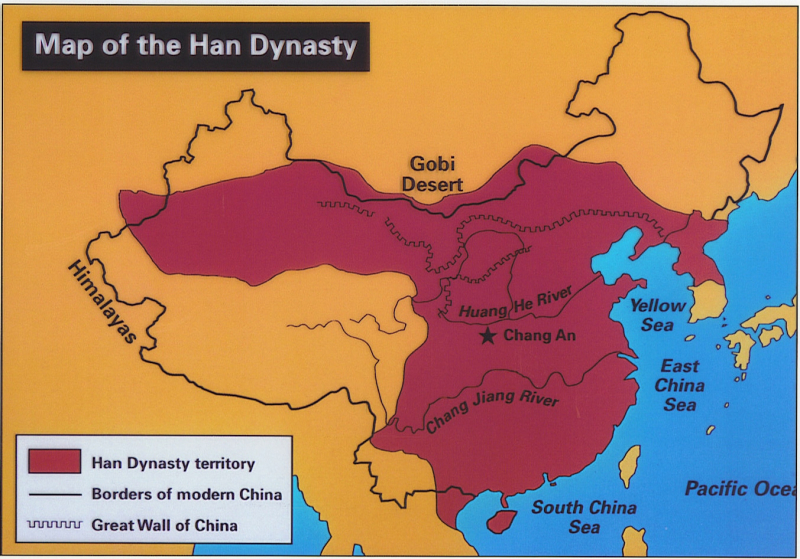
Map of the Han Dynasty - china-mike.com Epimetheus -
China's Song Dynasty, which started in 960 and ended in 1279, ruled the country for a thousand years. After usurping Later Zhou's throne, Song Dynasty Emperor Taizu established the dynasty. The Ten Kingdoms and Five Dynasties eras were both put to an end by the Song Dynasty's conquest of the remaining Ten Kingdoms.
The Northern Song and the Southern Song were the two divisions of the Song dynasty. The Northern Song Dynasty ruled much of what is now Eastern China, and its capital was located north of Bianjing (now Kaifeng). The term "Southern Song" describes the time following the Jin-Song Wars, when the Song Dynasty lost control of its northern half to the Jurchen dynasty. The Song court relocated south of the Yangtze at that time, establishing Hangzhou as its capital. The Song Dynasty lost control of the traditional heartlands of China along the Yellow River, but the Southern Song Empire continued to have a sizable population and plenty of agricultural lands to support a robust economy. The Mongols took over northern China in 1234 after the Jin dynasty was overthrown, and they kept a tense alliance with the Southern Song. The fourth Great Khan of the Mongol Empire, Möngke Khan, passed away in 1259 when he was besieging Diaoyucheng, a mountain castle near Chongqing. In 1271, his younger brother Kublai Khan declared himself to be the next Great Khan and founded the Yuan dynasty. After two decades of intermittent conflict, Kublai Khan's armies overthrew the Song Dynasty in 1279 and united China under the Yuan dynasty after defeating the Southern Song at the Battle of Yamen.
In terms of economy, the Song Dynasty was one of the most advanced and successful economies in medieval times. When financial gains from international and domestic commerce along the Grand Canal and the Yangtze River were guaranteed, Song Chinese put their money in joint stock enterprises and numerous sailing ships. The state had to deal with guilds created by artisans and merchants when it came to taxation, requisitioning products, and fixing minimum salaries and pricing for items.
Private business owners who operate their own smelters and government-controlled smelting plants both compete in the iron sector. The Song economy was strong enough to support yearly iron product production of about 100 million kilos. The majority of this iron was created with the intention of being utilized by the military to create weapons and other equipment, but part of it was also used to create many of the iron goods required to satisfy market demands. The domestic market is expanding. New canals were built, which improved the flow of iron goods from the industrial hubs to the main market in the capital, enhancing iron commerce in China.
The first government in history to issue paper money was the economy's most significant development during the Song era. There were over six billion coins produced yearly in 1085. The Song court created many government-run facilities to produce paper money in the towns of Huizhou, Chengdu, Hangzhou, and Anqi. The number of people employed in banknote manufacturing is enormous. In 1175, it was noted that the Hangzhou factory employed more than a thousand employees daily.
The Song Dynasty saw great advancements in philosophy, mathematics, science, technology, and engineering. This was also the first Chinese government to set up a permanent fleet. As well as the first known chemical formulation of gunpowder, this dynasty was responsible for the development of explosive weaponry including blazing arrows, explosives, and fire lances. It also witnessed the first use of a compass to determine north, the first description of a pound lock in writing, and the development of the astronomical clock.
To conclude, the Song Dynasty:
- existed from 960 to 1279 and ruled the country for a thousand years under Emperor Taizu.
- divided into two periods: the Northern Song and the Southern Song.
- economically, it achieved outstanding achievements such as international trade.
- regarding science and technology, iron production, issuance of banknotes, and gunpowder production were also first recorded.
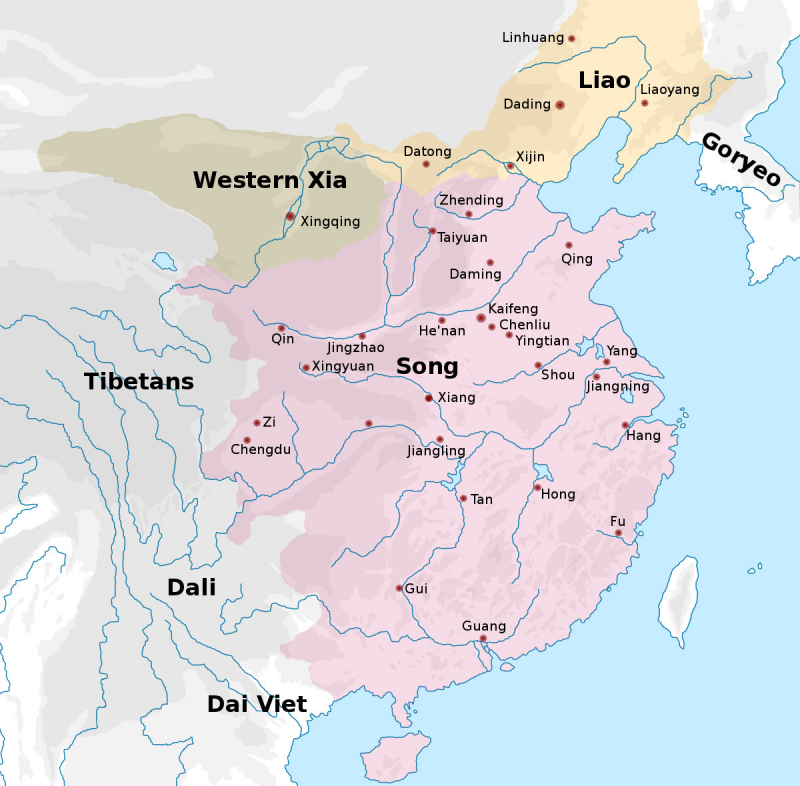
The Song Dynasty's territory - Photo: wikipedia.org 
Emperor Taizu of Song - Photo: researchgate.net -
China's Sui Dynasty, which ruled from 581 to 618, was a brief dynasty. After the Western Jin Dynasty fell, the Northern and Southern dynasties were united by the Sui, which also created the groundwork for a Tang dynasty that would last longer.
In 577, Northern Zhou-ruled Xi'an defeated Northern Qi and united Northern China toward the end of the Southern and Northern Dynasties. Yang Jian, a Han Chinese who would eventually form the Sui Dynasty, was appointed regent of the Northern Zhou court during this period. Emperor Jing of Northern Zhou was the stepchild of Empress Dowager Cixi, who was his daughter. Yang Jian overthrew the Northern Zhou emperors and assumed the title of Emperor Wen of the Sui dynasty after defeating an army in the eastern regions. Emperor Wen restored his Han surname Yang and ended Northern Zhou's anti-Han policies. Emperor Wen started a number of changes while in power during the preceding Han dynasties to fortify his realm in preparation for the battles to unify China. After his father's passing, Emperor Yang of the Sui Dynasty took the throne. He also carried on enlarging the empire.
Economically, numerous centralized changes were put into place by Emperor Wen and his successor Yang. The establishment of the Five Departments and Six Departments system, the forerunner of the Three Departments and Six Ministries system, as well as standardization and unification of coinage, are among the most notable examples. These systems aimed to reduce economic inequality and increase agricultural productivity. By the middle of the dynasty, the newly united empire had reached a heyday of wealth thanks to enormous agricultural surpluses that fed a fast expanding population. The Grand Canal was the Sui Dynasty's most notable legacy. The network's hub was the capital Luoyang, which served as a connection between the eastern commercial and agricultural hubs of Jiangdu (now Yangzhou in Jiangsu Province) and Yuhang (now Hangzhou in Zhejiang Province), as well as the northern boundary, which was close to present-day Beijing.
Culturally, the Sui Dynasty was very brief, yet it underwent a significant cultural shift from earlier times. Many of the early Sui dynasty cultural innovations were then developed further and solidified throughout the succeeding Tang dynasty. This comprised not only the large-scale public projects started, including the Great Wall and the Great Canal but also the political system created by the Sui, which the Tang inherited with little modification after starting out outside the dominant political structure.
In terms of religion, prior to the Sui Dynasty, during the Sixteen Kingdoms era and the Southern and Northern Dynasties, Buddhism was widely practiced. It originated in India and traveled through Kushan Afghanistan to China during the Later Han period. Buddhism gained popularity while centralized governmental power was weak, resulting in a cohesive cultural force that helped the country exit the conflict and become the Sui dynasty. Buddhism had a significant role in China's cultural revival during the Sui period. Initially, Buddhist ideas were absorbed through Sanskrit texts from India. However, towards the end of the Sixth and Sui Dynasties, indigenous Chinese schools of Buddhist thought started to thrive. The Tiantai school was established by Zhiyi, who also finished the Great Treatise on Concentration and Insight. He presented the Lotus Sutra's central Buddhist teaching, the idea that there are "Three Thousand Realms in One Moment of Life" in it.
Construction along the Great Wall of China was one of the primary work initiatives carried out by the Sui. However, these and other large-scale projects have put a burden on the economy and riled up the labor force. The uprising against China during the last few years of the Sui Dynasty expelled many strong Chinese men from rural fields and other jobs. The economy and agricultural base have both been further harmed by this. Men deliberately fracture their limbs in order to escape conscription; they refer to this behavior as "favorable foot" or "lucky foot". After the Sui Dynasty was overthrown, in 642 Emperor Taizong of the Tang Dynasty made an effort to put an end to the practice by punishing people who were found to be self-healing and injured with more harsh punishments.
In sum, the Sui Dynasty:
- lasted from 581 to 618, and was a brief dynasty under Emperor Wen and Yang.
- Economically, the establishment of the Five Departments and Six Departments system, the forerunner of the Three Departments and Six Ministries system, as well as standardization and unification of coinage, are among the most notable things.
- Regarding religion, Taoism, Buddhism, and Confucianism are still developed and maintained.
- Great constructions such as the Great Wall weakened the people and economy of China during the Sui Dynasty.
- 618 marked the fall of the Sui Dynasty.
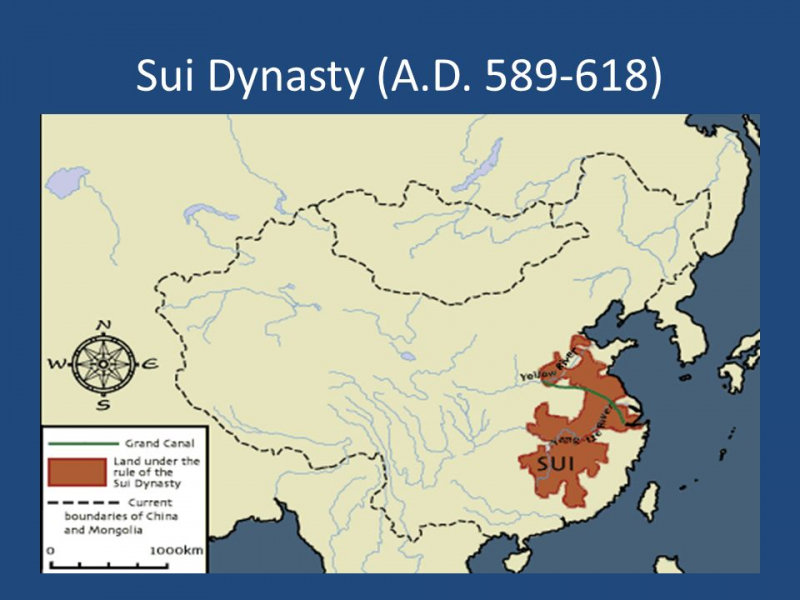
The Sui Dynasty's territory - Photo: slideplayer.com 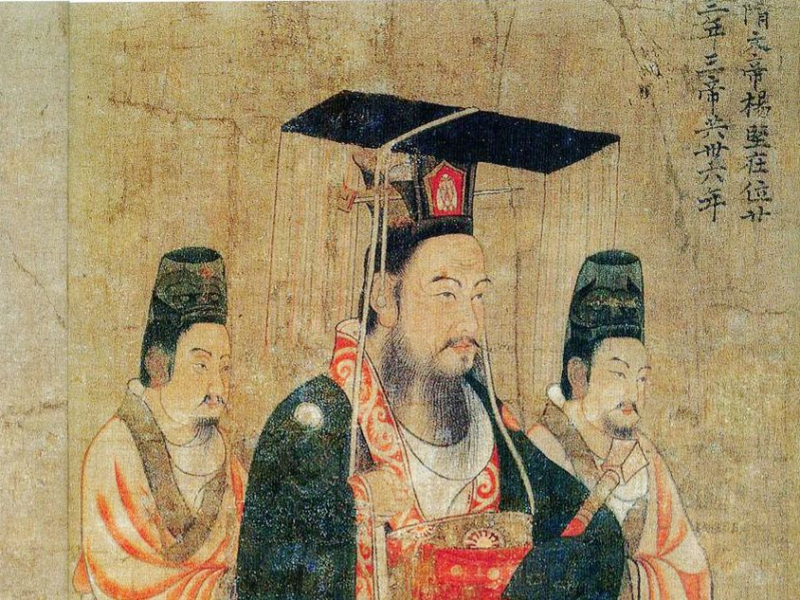
Emperor Wen of the Sui Dynasty - Photo: wikipedia.org - lasted from 581 to 618, and was a brief dynasty under Emperor Wen and Yang.
-
The Tang Dynasty is regarded as the height of Chinese civilization and art. From the time it came to power in 618 AD until 907 AD, Tang China developed a reputation abroad that went beyond its cities and, and disseminated its culture across much of Asia via the practice of Buddhism.
The founder of the Tang Dynasty, Li Yuan, served as Duke of Tang and governor of Taiyuan, the modern-day Shanxi province's capital. He was the first cousin of Emperor Yang of the Sui Dynasty, possessed status, and had military expertise. With the help of his son and daughter, the princess Binh Duong, who recruited and led his own army, Li Yuan revolted in 617. Li Yuan conquered Chang'an in the winter of 617, demoting Emperor Yang to the rank of Emperor Zuo, or retired emperor, and serving as Yang You's puppet master. Li Yuan proclaimed himself emperor of the Tang Dynasty on June 18, 618, after learning that Emperor Yang had been assassinated by the general Yuwen Huaji. Li Yuan, also known as Emperor Gaozu of the Tang Dynasty, ruled until his son Li Shimin overthrew him in 626. Li Shimin, who has been in charge of the army since he was 18, is skilled with strong bows, swords, and spears and is renowned for his successful horse assaults. On May 28, 621, he defeated Dou Jiande at Luoyang in the Battle of Hulao despite facing a larger force. Li Shimin attacked and killed his two brothers, Li Yuanji and Crown Prince Li Jiancheng, during the Xuanwu Gate Incident on July 2, 626, sparking a rebellion that drove out the royal family out of fear of assassination. Soon after, Li Shimin succeeded his father and was typically referred to as Taizong.
Politically, Taizong set out to address governmental internal issues that had regularly plagued earlier dynasties. He established a new legal system based on the Sui dynasty's code, which other Chinese dynasties as well as neighboring polities in Vietnam, Korea, and Japan would follow. The earliest extant code was created in 653, containing 500 articles, listing offenses and punishments such as ten light strokes, one hundred heavy strokes, and deportation, or enslavement of criminals.
The Tang Empire's capital Chang'an (modern-day Xi'an), where the emperor maintained his expansive palace grounds and entertained political messengers with music, sports, acrobatics, poetry, paintings, and theatrical performances, served as the hub of Tang political authority.
Economically, the Tang Dynasty was able to absorb and acquire several new technology, cultural practices, rare luxuries, and modern products through the utilization of land trade through the Silk Road and marine trade by sea sails. The Tang Dynasty was able to take in fresh concepts about clothing, new kinds of pottery, and improved silversmithing methods from Europe, the Middle East, Central, and South Asia. While the Chinese used to constantly sit on mats put on the floor, the Tang people eventually accepted the strange idea of stools and chairs as a means of seating. Chinese commodities like silk, lacquerware, and porcelain were highly prized and purchased in great numbers by people in the Middle East.
In terms of religion, in addition to Taoism and Buddhism, the Tang Dynasty also acknowledged a number of other foreign religions. The Tang court acknowledged the Oriental Church of the Assyrians, often known as the Nestorian Church or the Oriental Church in China. To recognize the accomplishments of their community in China, the Nestorian Stele was made in the year 781. In Shaanxi Province, where Daqin Temple is still standing, a Christian monastery was built, and there are pieces of art within with Christian themes. After the Tang Dynasty, this religion was largely forgotten, but the 13th-century Mongol conquests in China brought it back to life.
Literaturally, Chinese literature, and art reached their pinnacle during the Tang Dynasty. There are already more than 48,900 poems written by 2,200 Tang writers. For individuals who wished to pass the imperial examinations, learning how to write poetry became a must. The two most common literary forms throughout the Tang Dynasty were Gushi and Jintishi, with the well-known poet Li Bai being known for using the old style and poets like Wang Wei and Cui Hao being known for using the latter. The writings of Tang writers Liu Zongyuan and Han Yu served as a major source of inspiration for the Classical Prose movement. The Han Dynasty's poetry legacy of the Piantiwen style was abandoned in favor of this new prose form. During the Tang Dynasty, short tales and novels were also frequently read. One of the most well-known of these was Yuan Zhen's Biography of Yingying, which was widely read at the time and, by the time of the Yuan Dynasty, also served as the inspiration for performances in Chinese opera.
After AD 820, the Tang Dynasty was marked by prominent court intrigues by eunuchs plotting to assassinate one emperor after another. Li Keyong and Zhu Wen were two of the most important military leaders in northern China during the last two decades in power due to the weakening of the imperial apparatus. The Tang Dynasty ended in 907 when Zhu Wen overthrew King Ai and ascended the throne. His establishment of Later Liang marked the beginning of the Five Dynasties and Ten Kingdoms eras.
To conclude, the Tang Dynasty:
- Lasted from 618 AD to 907 AD and was founded by Emperor Li Yuan.
- Politically, Emperor Taizong resolved internal affairs, establishing a new legal system based on the Sui dynasty code of conduct.
- Economically, the Tang dynasty flourished trade through the Silk Road and sea trade.
- Regarding religion, besides Taoism and Buddhism, the Tang Dynasty also recognized foreign religions such as Christianity.
- Literaturally, Chinese literature, and art culminated with more than 48,900 poems, as well as short stories and novels.
- 907 AD marked the fall of the Tang Dynasty.
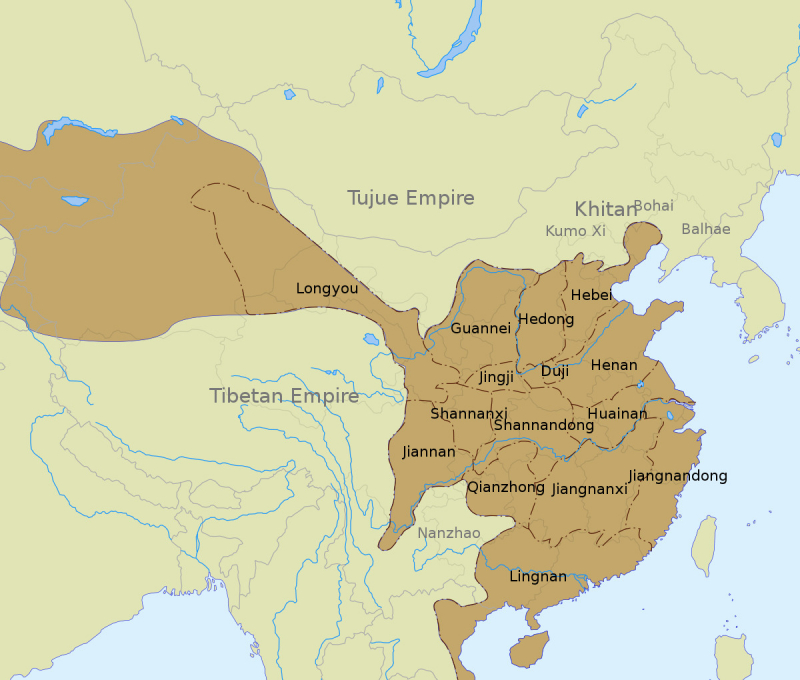
The Tang Dynasty's territory - Photo: wikipedia.org 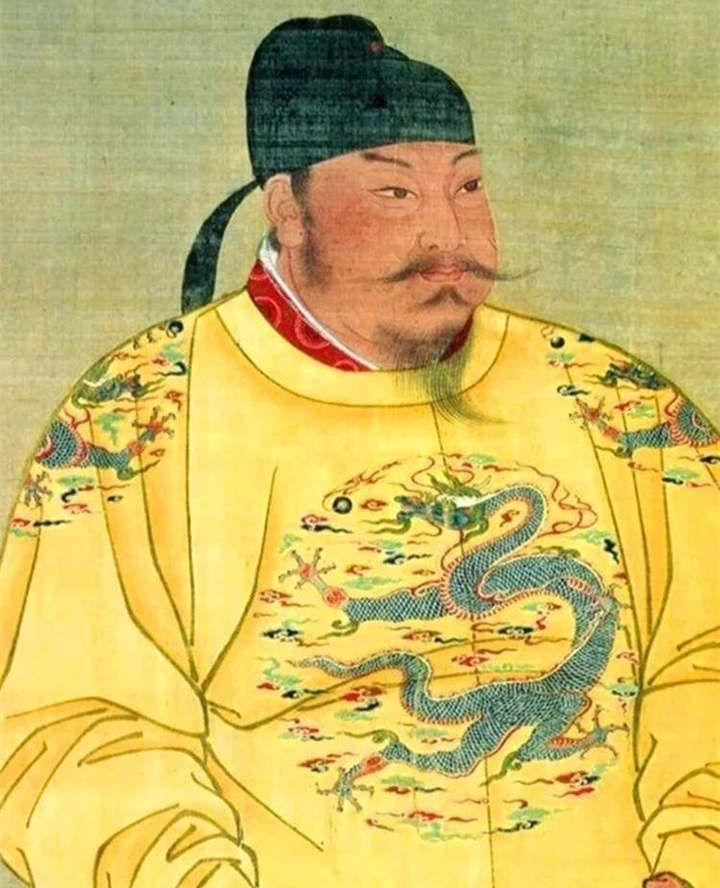
Emperor Li Yuan - Photo:pinterest.com -
From 1271 until 1368, the Yuan Dynasty, a Mongol imperial dynasty in China, served as the Mongol Empire's successor state when it was split up. Kublai Khan (Emperor Shizu), the head of the Borjigin clan, established the Yuan Dynasty. In 1264, Kublai Khan relocated the Mongol headquarters from the Karakorum to Khanbaliq, and in 1266, he established a new settlement close to the old Jurchen capital Zhongdu, which is today Beijing.
Kublai Khan encouraged advancement in business, science, and culture while in power. Regarding commerce, he helped Silk Road traders by safeguarding the nation's mail system, developing infrastructure, lending money to caravans, and encouraging the use of paper money.
Despite the Yuan Dynasty's brief lifespan, it was a crucial time in art history. The extensive use of blue-and-white ornamental porcelain, improvements in Chinese painting style during this time, as well as advancements in the lacquer industry all had a significant impact on the later Ming and Qing dynasties' artistic output. Through both land and sea channels, the Yuan dynasty fostered new and restored ancient commercial connections with the outside world. Along with the influx of foreign commodities, creative businesses grew as a result of the new ideas and technology that inundated the coastal towns. Cobalt oxide is used to paint ceramics before they are covered in a transparent glaze that is also referred to as blue-white porcelain. In Jingdezhen, southern China, they started to be made in large quantities for local and international markets, particularly the Near East. Later, the Yuan court expanded the legal controls over this manufacturing at Jingdezhen, which eventually emerged as China's most significant porcelain production hub.
The Yuan Dynasty saw significant advancements in calligraphy, poetry, and theater, which produced many of the well-known authors and artists of today. The effort of combining poetry, painting, and calligraphy into a sort of cohesive system when thinking about ancient Chinese art is one of the significant aesthetic and cultural developments of the Yuan Dynasty.
Regarding religion, Buddhism, Islam, Christianity, and Manichaeism were among the several religions that spread throughout the Yuan period. Muslims became more numerous in China when the Yuan Dynasty was established. The Yuan Dynasty did not, however, adopt Islam as the Western khanates did. Kublai Khan advocated the promotion of Buddhism, particularly the Tibetan schools of thought. Tibetan Buddhism as a consequence became the orthodox state religion. In order to manage Buddhist monks around the empire, Khanbaliq formed the Department of Buddhism and Tibet, the highest level ministry and government institution.
War, starvation, and public outrage characterized the Yuan Dynasty's closing years. Over time, Kublai Khan's successors in Asia lost all control over further Mongol territories. They gradually lost power in China as well. The latter Yuan rulers' short reigns were marked by murderous conspiracies. Natural catastrophes like droughts and floods began to affect rural residents in the late 1340s. Famine ensued, and poor government measures caused a decline in public support. After many wars that massacred each other, the year 1368 marked the fall of the Yuan Dynasty.
In short, the Yuan Dynasty:
- was a Mongol imperial dynasty in China that existed from 1271 until 1368 with the first Emperor being Kublai Khan.
- regarding trade, Kublai Khan promoted economic and commercial development through the Silk Road.
- was an important period with improvements in the Chinese painting style, as well as advances in lacquer and ceramic production.
- regarding religion, witness widespread religions such as Buddhism, Islam, Christianity, and Manichaeism.
- 1368 marked the fall of the Yuan Dynasty after a long period of war, starvation, and public outrage.
History of China 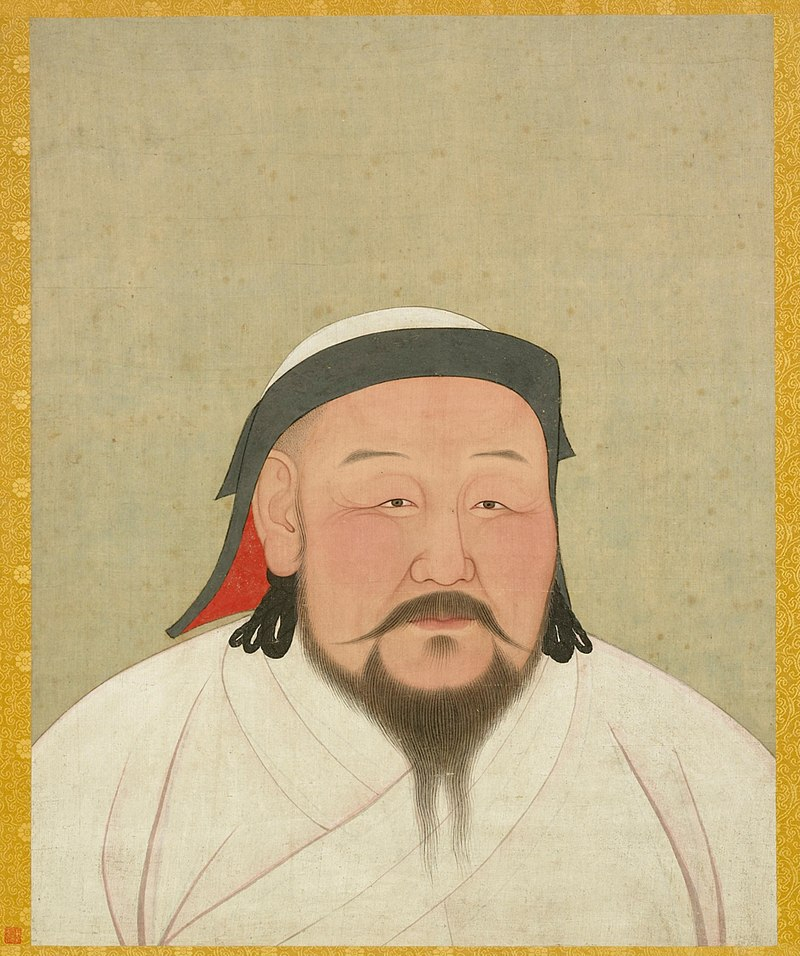
the first Emperor of the Yuan Dynasty, Kublai Khan - wikipedia.org -
After the Mongol Yuan dynasty was overthrown, the Ming Dynasty, sometimes referred to as the Great Ming, controlled China from 1368 to 1644. China's final traditional dynasty, the Ming, was controlled by the Han, the country's dominant ethnic group.
Emperor Taizu, also known as Zhu Yuanzhang, the founder of the Ming Dynasty, was born into poverty and spent some of his boyhood traveling the nation after his parents perished in a series of natural disasters along the Yellow River. He lived for a while as a beggar in a Buddhist monastery, but that existence came to an end when a militia set the monastery on fire to put down a revolt. Then, he joined a White Lotus Guild-affiliated rebel organization in AD 1352 and advanced quickly. Eventually, he led a successful assault on Nanjing, which he used as a base to fight the local warlords. In 1368, Zhu Yuanzhang overran Beijing, burned the palaces, forcing the Mongol emperors to flee, and founded the Ming Dynasty.
After taking power, Emperor Taizu worked to rebuild the infrastructure of the Ming Dynasty. Along with new palaces and administrative buildings, he also constructed a 48 km long wall surrounding Nanjing. According to Ming history, Emperor Taizu started creating a new Confucian code as early as 1364. It was finished in 1397 and reproduced some of the rules contained in the ancient Tang Dynasty Code 653.
Emperor Taizu designated Zhu Yunwen as his heir, and once Emperor Taizu passed away in 1398, he succeeded to the throne as Emperor Jianwen. The militarily powerful Zhu Di, son of Emperor Taizu, disagreed with this, though. He and Emperor Jianwen soon started to feud politically. To assassinate Jianwen and his courtiers, Zhu Di personally commanded the soldiers in the insurrection that destroyed the palace in Nanjing. Later, Zhu Di became the Yongle Emperor and rose to the throne. His reign is considered by scholars to be the second founding of the Ming Dynasty because he changed
many of his father's policies.
From 1405 through 1433, Emperor Yongle sent ships to India, the Persian Gulf, and the east coast of Africa as part of ambitious expeditions that sought to extend China's tribute system to neighboring nations. By 1557, the system of tribute had been supplanted by maritime trade, through which China traded silk and permitted the presence of Europeans within the empire. This was a time of gastronomic development when China first encountered delicacies like sweet potatoes and peanuts.Porcelain was one of the most loved exports of the Ming Dynasty. They are made by crushing ceramics, combining them with ceramic clay, and baking the mixture until transparent. Although this method was created in the Tang Dynasty, it was improved during the Ming Dynasty. To create imperial porcelain, a factory was built in Jingdezhen in 1368. The Jingdezhen factory, for example, became a much-loved exporter of porcelain to Europe in hopes of multiplying expand this production model.
Regarding religion, Christian missionaries from Europe also started to arrive in China, giving the globe its first sight of daily life there. In 1583, Matteo Ricci, an Italian Jesuit priest, established the first Catholic mission in China. Chinese literature was translated into Latin by Ricci, who also studied the language and produced several books on it.
In terms of literature, China saw a publishing boom during the Ming Dynasty, with a vast variety of accessible publications produced for the general public. Reference books, training on religion and philosophy, Confucian literature, and instructions for formal admission tests were also distributed. Fiction has a big audience, particularly works that use informal language. The funny short stories by author Feng Menglong about ghosts and court characters were very well received by businesspeople and educated ladies. Period fiction started to become more popular during the Ming Dynasty. The most well-known books from the Ming Dynasty were often written by anonymous authors under fictitious names, as was the case with the sensual works Plum in a Golden Vase and Golden Lotus. During this time, illustrated books also thrived. For an image that is easily replicable, artists might carve their images onto wooden blocks for the printing process. Due to the repetition of text provided by publishers, one method a publisher differentiates their books from others is by using drawings.
The financial problems of the Ming were partly to blame for the dynasty's downfall. The continued expenditures on defense against insurgents, especially the Mongols, as well as military campaigns also began to significantly drain the empire's financial resources. The record-low temperatures of the Ice Age also caused an agricultural disaster, draining the royal coffers. Due to starvation, soldiers left their stations to join gangs that pillaged the countryside. Floods, locusts, droughts, and diseases are slowly ravaging the country. A group of rebels broke the dyke of the Yellow River in 1642, resulting in flooding that killed hundreds of thousands of people. In 1644, Chongzhen, the final Ming emperor, killed himself. Later that year, the semi-nomadic Manchus prevailed in the chaos and established the Qing Dynasty, marking the fall of the Ming Dynasty.
To conclude, the Ming Dynasty:
- controlled China from 1368 to 1644 with the first Emperor being Taizu.
- Emperor Taizu rebuilt the infrastructure with palaces and typically a new Confucian code as early as 1364.
- the Yongle Emperor witnessed the development of maritime trade through the silk trade, the development of cuisine, and porcelain production.
- Regarding religion, witnessing the arrival of Christian missionaries from Europe to China.
- the literary side witnessed a publishing boom with a lot of publications being produced for the public such as reference books, training in religion, and philosophy.
- financial problems were the cause of the downfall of the dynasty in 1644.
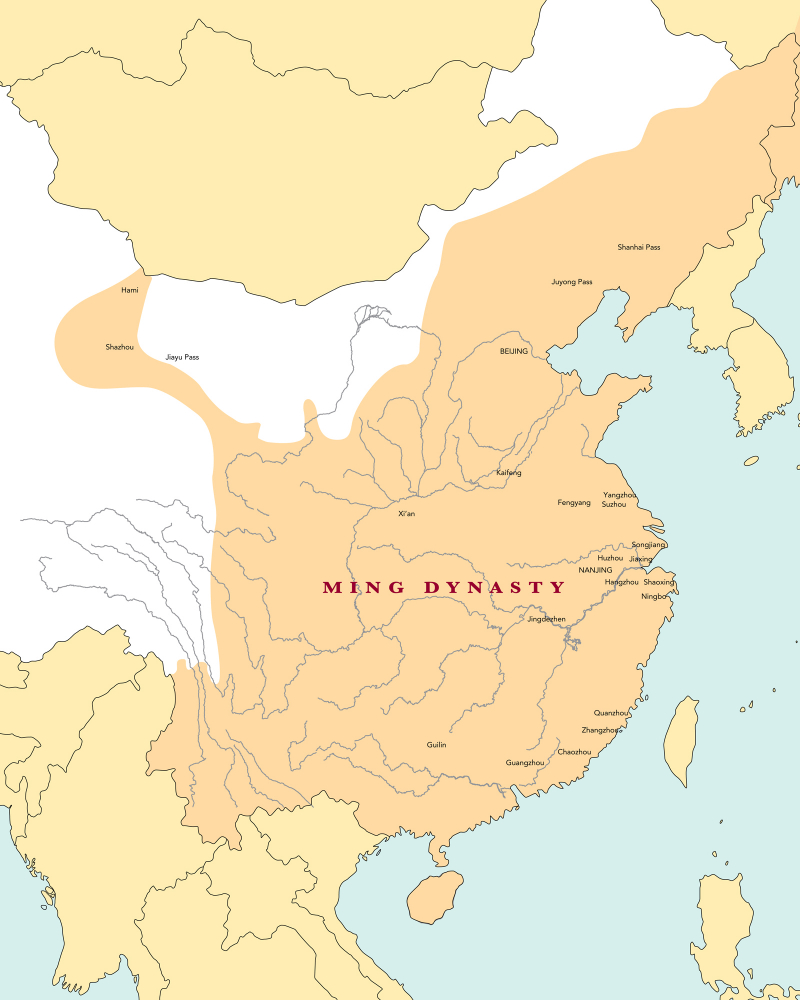
The Ming Dynasty's territory - khanacademy.org 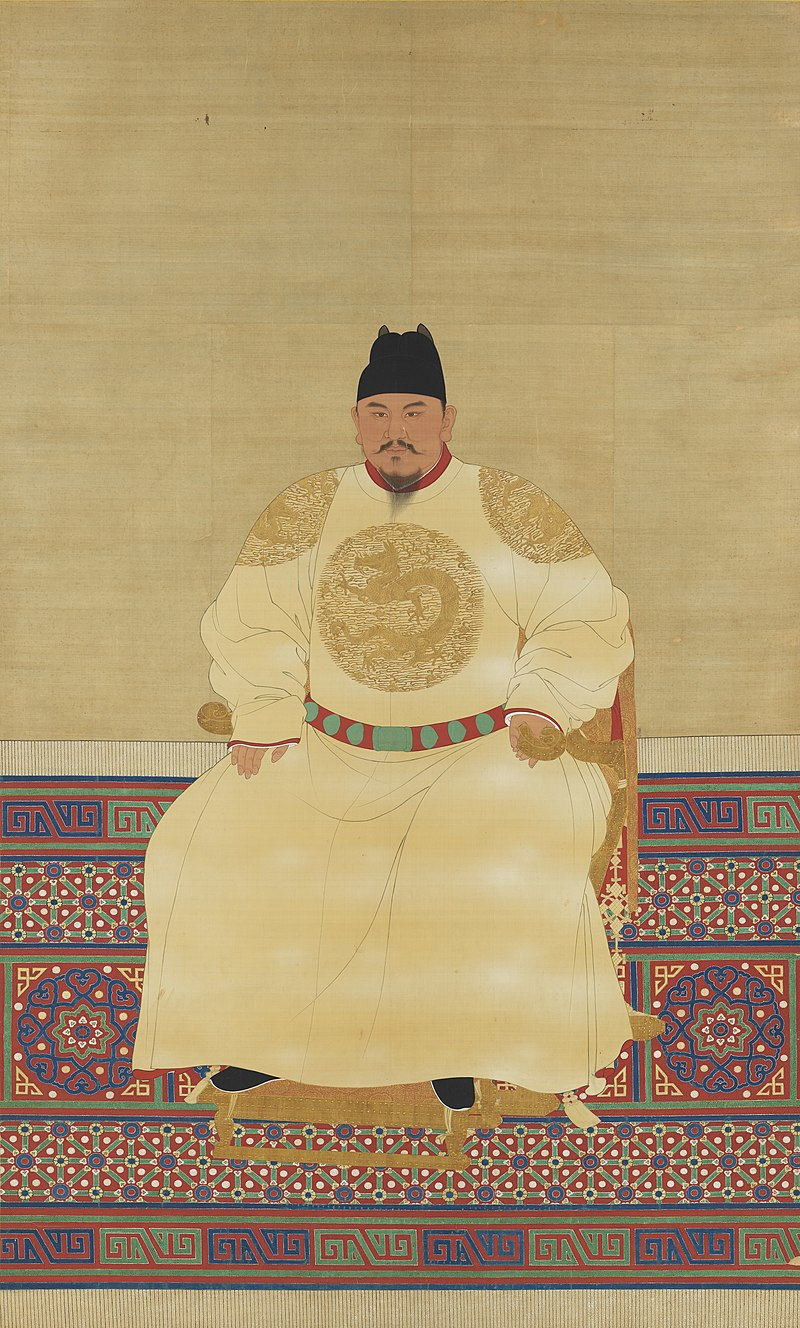
Emperor Taizu - wikipedia.org












